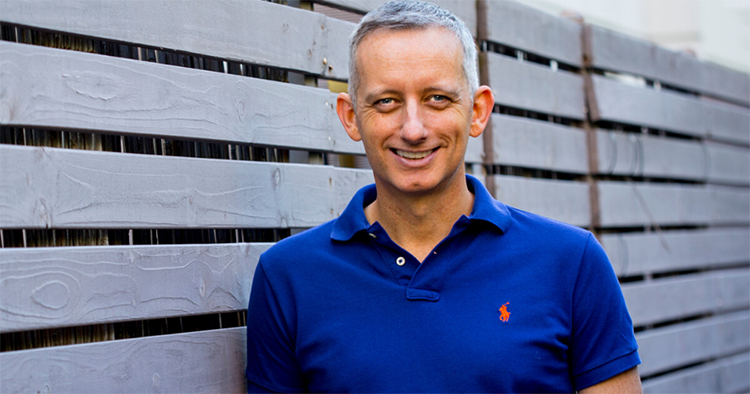David Valks went from working in the recruitment industry to starting his own singing school. Read on for his tips on marketing, pricing and bookings.
No one could accuse David Valks of doing things by halves. In the space of a few short months last year, he walked away from his recruitment career, moved house and started his own singing studio.
Background
After living in Sydney, Australia, for many years David took redundancy in September and signed up to BAST’s five-day intensive.
After completing the course, he relocated to the Gold Coast in sunny Queensland and threw himself into establishing his singing school.
Even though David was new to teaching, he had a wealth of singing experience to draw on; the Scotsman spent his 20s and 30s performing on cruise ships and the West End.
“I wanted to do something that I loved and singing has always been a big passion for me,” he says. “I remember how influential singing teachers were in my life; I wanted to make a difference in other people’s lives.”
How he got started
1 David created a website, David Valks Singing School, using WordPress.
2 He created a Facebook page.
3 Next, David set up a Google Ad to promote his studio. It costs $9 a day and brings in about 90% of his business.
Booking lessons
Visitors to David’s website can book a free 30-minute trial lesson (no filling in an email request or waiting for a call back).
When a customer clicks the ‘Book Now’ button, they are taken to a calendar to arrange their lesson time. The aim is to get visitors who feel inspired to book straight away – if a potential customer leaves the website to think it over, they might not return.
After booking a trial lesson, the customer receives a Google form asking for their details and musical interests.
Initial lesson
The 30-minute free lesson is a chance for student and teacher to get to know each other. (Note: David does all his teaching face-to-face as Australia has a low number of Covid-19 cases).
At the end of the session, David explains his terms and conditions. About 90% of people who have completed a free taster have gone on to book a block of ten lessons.
Pricing
David quizzed two singing teacher friends about what they charge and pegged his prices at a similar rate.
“I didn’t want to start out too low because then it’s hard to get out of that,” he says. “Yes, you might get people, but are they the right people? At the other end of the scale, I know some teachers on the Gold Coast charge more than me, but I wanted to start at a rate where I was comfortable.”
Read our blog about how to set your prices here.
Marketing
“The main thing to remember is that marketing is just about trying to get eyeballs onto your page or your website,” says David.
He’s tried all sorts of things to raise his profile, from giving away free lessons as a raffle prize for a school fundraiser to offering a scholarship on Facebook (this idea fizzled, the person who won never booked in for a lesson.)
Useful tools
Here are some of the apps and platforms David uses.
Canva: A simple graphic design platform that is useful for creating logos and marketing material.
WordPress: An easy-to-use content management system for creating websites.
Google Ads: If you want to get noticed, where better to start than Google?
Acuity Scheduling: David uses a free version of this appointment programme to allow students to book classes online.
My Music Staff: Handles invoicing and helps David keep track of how many lessons students have had if they’re on a ten-lesson plan.
Client base and business goals
David has a diverse client base ranging from a nine-year-old to a husband and wife in their 70s who enjoy singing duets. Another client, a novice singer, has three lessons a week.
Currently, David teaches 15 hours a week. His goal is to get up to 30 hours of face-to-face teaching a week and explore other revenue streams, such as working with choirs or running workshops.
Obstacles
David makes starting a singing school look easy, but he has faced a few challenges along the way.
Knowledge
Even though he had a performance background, David wondered if he had enough technical knowledge to teach. BAST helped him with this.
“The course was a brilliant starting point,” he says. “I was brand new to teaching, so it was essential for me. It gave me the confidence to teach.”
Imposter syndrome
At first, David wondered: Am I good enough? Do I know enough? Will people like me?
“One thing that helped was at the end of the course [BAST Trainer] Line Hilton said: ‘You’re already more qualified than most singing teachers out there’. That’s what I kept coming back to when I questioned if I was good enough.
“Now I’m a lot more confident because it’s a case of well, this is what I do. If someone doesn’t want to book in again that’s fine; maybe I’m not the right teacher for them.”
(So far only one person who came for a trial didn’t return, so David must be doing something right.)
Adapting to different students
David knew how to teach for his voice, but what about coaching children and women?
It’s a case of learning as he goes. If David comes up against a particular problem one week, he’ll go away and research it to be ready to help the student the following week.
As a BAST member, he can also ask for advice at our Monthly Catch Ups, in the BAST Facebook group or learn in our teaching clinics. (Find out about BAST membership here.)
Tips for starting your own singing school
- When it comes to marketing, think about what makes you stand out from other singing teachers. Recognising your USP is particularly important in a Google Ad, where you only have two lines to sell yourself. David includes ‘West End Performer’ in his advert because it’s a real point of difference on the Gold Coast.
- There will never be a ‘perfect’ time to start a business. It’s essential to have a plan but don’t over-analyse and procrastinate. It’s a learning process.
- Set yourself realistic goals. David’s target was to have seven students by Christmas – a goal that he exceeded.




